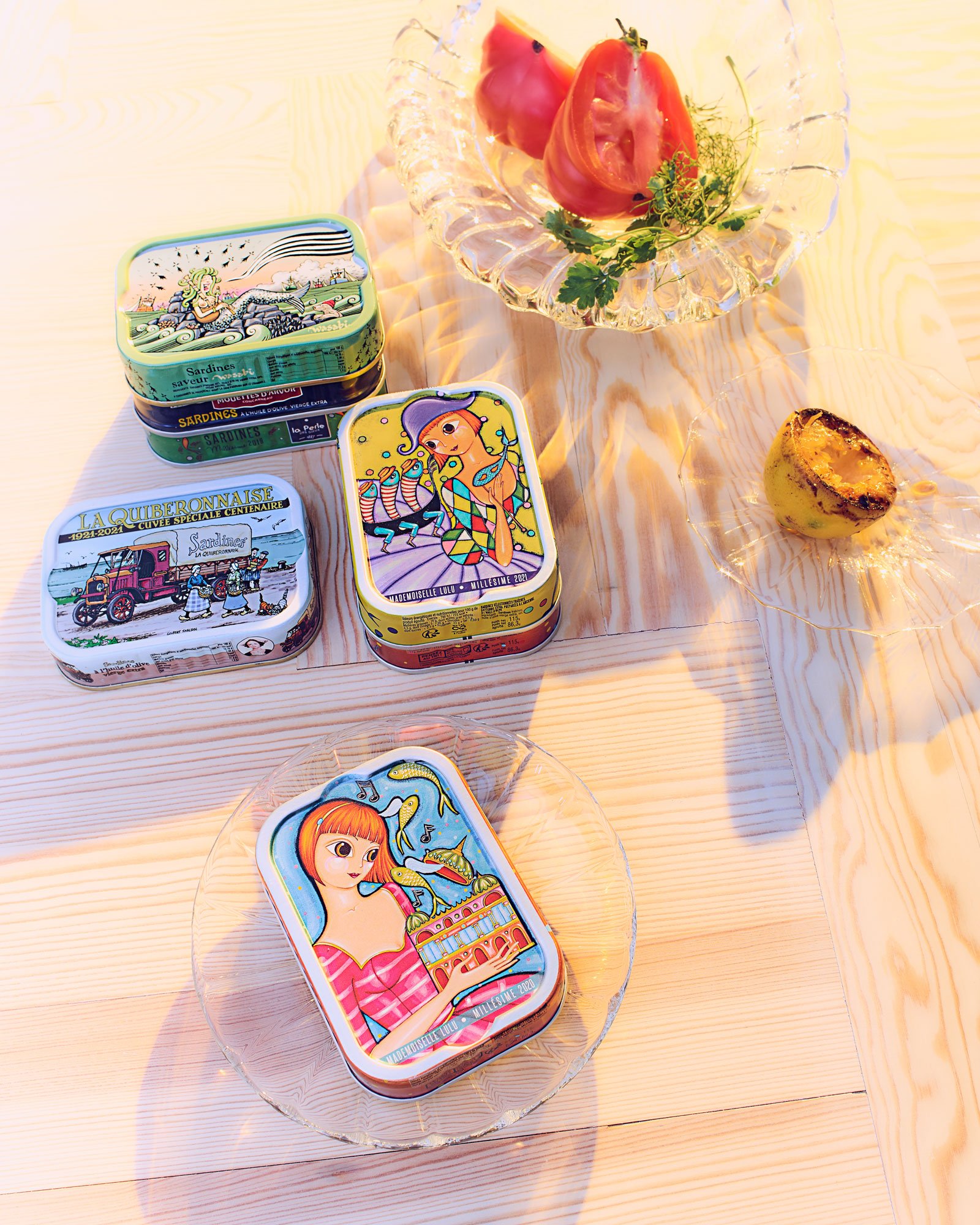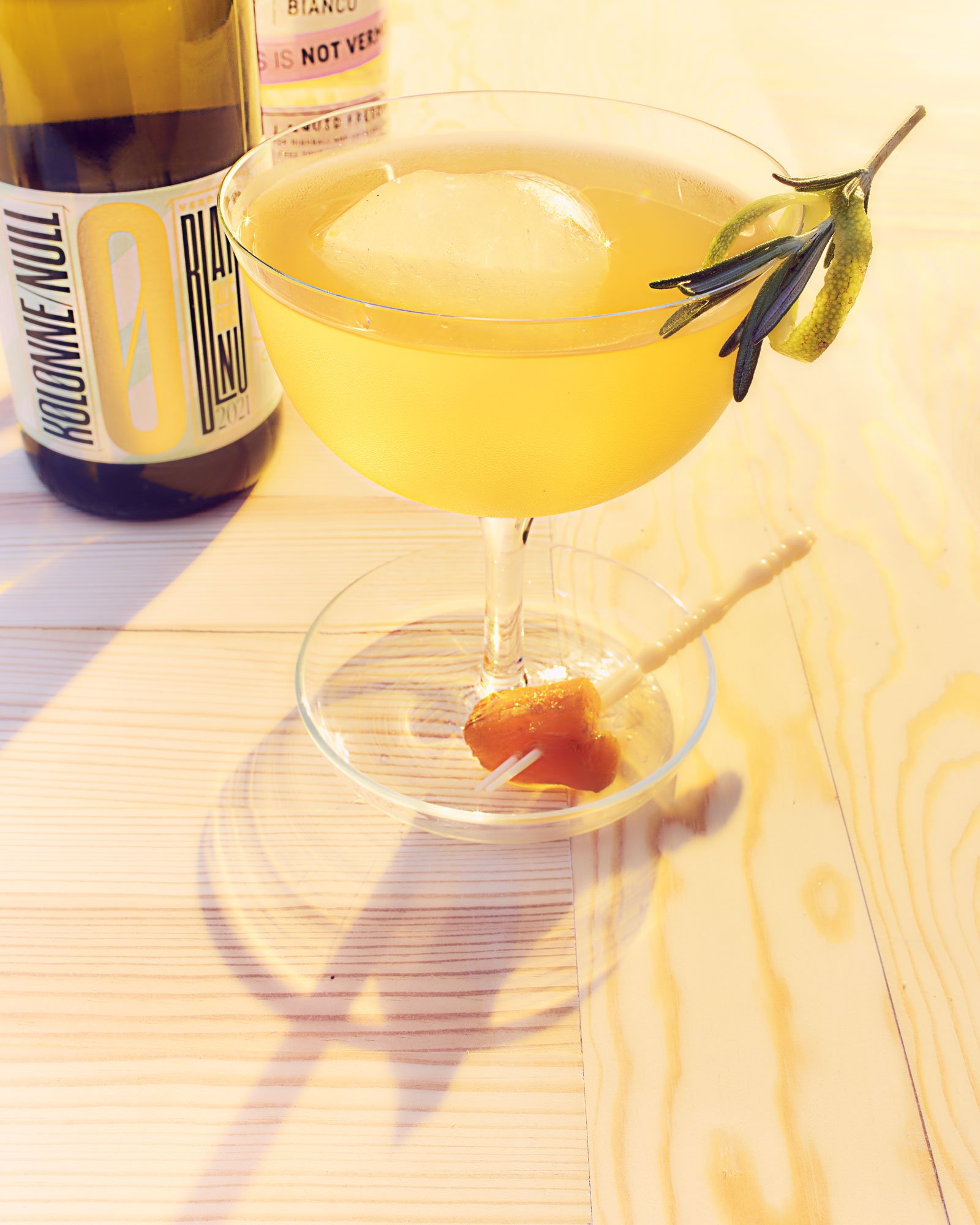Sardines from Quiberon - Zéro Sangria Blanc
Recipe, Food-Styling, Photo: Oliver Schwarzwald
Greetings from France, part 2
Still Brittany, still crêpes, galettes and moules frites. And in addition another specialty we picked up on Quiberon: Canned sardines. Maybe it's because even when I was a kid, we often had canned fish. My father was a fan. There was the classic sardine, herring in tomato sauce or mackerel. So every now and then I like it quite a bit - culinary memories, in other words. On a good slice of sourdough bread toasted in olive oil, which in itself is rubbed with a little garlic and vigorous tomato, a fine sardine can be quite delicious. Provided it's also a good sardine. And when it comes to excellent sardines, Brittany is the place to go. Here, sardine production has a long tradition. As can be seen in towns such as Concarneau, which is home to some of the oldest canning factories in the region and specializes in sardine processing. Or Douarnenez, with its fishing museum that documents the importance of fishing and processing in the region. Or Quiberon. This small town is located on a peninsula and is an important place for fishing and processing seafood, including sardines. In addition, it has become a classic tourist magnet. We stayed there for one day. Memories of well-known vacation islands are awakened. From my side, there is no unqualified travel recommendation. Tip: Get some beautifully designed vintage sardines at Le Quiberonnaise, take a look at the sea and leave again.
Vintage sardines? WTF?
It was probably the manufacturer Gonidec that first launched the vintage sardine in the mid-nineties. Gradually, other manufacturers followed suit. On the one hand, because the sardine actually gains in flavor after longer storage in the can, and on the other hand, because this type of specialty is also easier to market. After all, the term "vintage" is familiar from the wine world and gives the supposedly "humble" fish in oil a little more grandeza. Not only the cans are beautifully designed for this purpose. Also the contents are treated very carefully. Only fresh and extra fat sardines are used. Good olive oil is used. For this purpose, a few fish are carefully placed in the cans by hand. This has the effect that the oil can coat them better.Everything speaks for a content with particularly good quality. And as already mentioned, the special design of the tins, which is now created in collaboration with renowned artists. Those who can't even make it to Quiberon can also conveniently order delicate sardines from various manufacturers at maitrephilippe.de. Among others also the "Lulu Edition", illustrated by Coralie Joulin. Something like this also makes a good decorative object on the kitchen shelf! If you want to hoard canned food, then please do it in style.
As a drink, I recommend something non-carbonated, preferably with a light touch of vinegar to neutralize the fatty fish. It also does the tomato good. A pineapple infusion with cinnamon brings some sweetness and spice notes in addition to the needed vinegar note. A non-alcoholic white wine fits as a base, such as a Verdejo from Column Zero, which has a nice intense fruity bouquet with its flavors of gooseberry and bay. For the needed depth aka. complexity, add a shot of non-alcoholic white vermouth from It's Undone. This gives the drink a subtle herbal bitter note.
Grandeza in a can and Grandeza in a glass!
Asanté Sober Buddies!
The drink:
10 CL non-alcoholic white wine e.g. Kolonne Null Verdejo.
3 CL Vermouth e.g. It's Undone No.8
2 CL Ananans Shrub
Pour Vermouth and Shrub into a glass filled with some ice. Stir until cold. Top with chilled non-alcoholic white wine.
The Shrub:
1 large pineapple, diced approx. 600 -700 g
200 g whole cane sugar Sugar
4 cloves
1 small piece of peeled ginger root
2 sticks of cinnamon
500 ml water
250 ml mild apple cider vinegar
1.Place pineapple, brown sugar, cloves, ginger and cinnamon in a medium saucepan and cook over medium heat until sugar is bubbling and pineapple is vigorously caramelized.
2. add water and bring to a boil, then reduce heat and simmer, covered, for at least 20 minutes.
Remove from heat and add the vinegar. Stir
4. let cool, preferably and overnight.
5. then strain, tip: the pineapple chunks are very tasty, definitely do not throw them away! Fill the shrub in a sterile bottle and store in the refrigerator.
Die Ananasstücke aus dem Shrub sind auch ein herrvoragender Snack.
Been there, done that!






